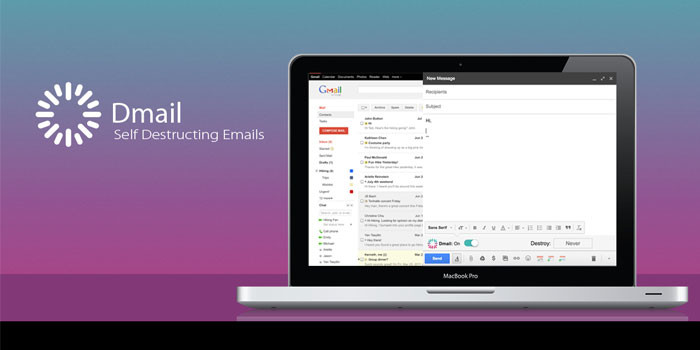While the short attention period, dispatching an email on a quirk has turned out the norm. frequently, the users discovers themselves expecting that the email that they have sent out along with important details would go poof following a particular period of time. Such as home addresses, credit card information and many other sensitive information which should not be out there for posterity.
And after that Snapchat show up and altered the regulations of the game. Massages which auto-destructed following a viewing and people are expecting if only something such remained for email.
Actually this is a demanding thing, no longer. Currently, we are regretful to a Google Chrome plug-in named as DMail, your emails currently can be pulled a vanishing act as the great Houdini.
Basically, this plug-in provides you full scope regarding how long your email receiver can see your email for instance for a day, week, month, etc, and as well this very easy to use.
What Dmail does is that it puts a ‘Send with Dmail’ button in your compose email window. Using that button, anyone can specify the time period for auto-destruction of the email.
What this plug-in called Dmail does is that it puts a ‘Send along with Dmail’ button in your compose email window.
Another amazing feature is that even if the email sender sends the email excluding any timeframe specified, they can, at their own expediency, wipe out the email by looking it in their Sent email folder and do so. You just need to dispatch the email through Dmail, and viola, you can destroy your email anytime you desire.
The messages which are dispatched by Dmail are alleged to be encrypted the main reasons why the right of access is strict by the sender. As well this plug-in has the feature of coming up in the future where even forwarded email will not be working. Nevertheless the dispatcher just meant for the main recipient of the email to see it however no one else.
Currently sending Dmails is just allowed on Google Chrome, while anyone who are using any browser or email client can view the emails.



